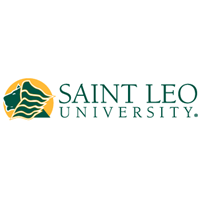Below is a summary of the abstract you submitted. Presenting author(s) is shown in bold.
If any changes need to be made, you can modify the abstract or change the authors.
You can also download a .docx version of this abstract.
If there are any problems, please email Dan at dar78@pitt.edu and he'll take care of them!
This abstract was last modified on March 15, 2022 at 5:02 p.m..

Saint Leo University has been a member of the SEA-PHAGES program since 2018. Students have annotated eight different phages, all isolated from Microbacterium foliorum. Out of the eight phages sequenced, all are Cluster E, with two belonging to the EE sub-cluster (Kaijohn and Upsilon). The EE cluster has phages known to have shorter genomes and lack integrase or repressors genes which is consistent with their lytic properties. Even though most of the phages were found on or near the Saint Leo campus, they show significant nucleic acid sequence diversity. In Spring 2022 we received from the University of Pittsburgh the sequence of 2 phage genomes, Jovita [Cluster EB] and Upsilon [Cluster EE]. Precise annotation has allowed students to contribute to the phage genomes identification. Here we will focus on phage Upsilon, previously isolated, purified, and amplified using various lab techniques. Upsilon, consists of 25 genes, 21 are in the forward orientation, three are in the reverse orientation, and there is a frameshift. In total Saint Leo students have analyzed 427 genes serving as a vector for further understanding of phages by identifying their function, mechanism, and interaction with their host. Here we present our data showing the discoveries of one of this year’s annotated phage, Upsilon.

